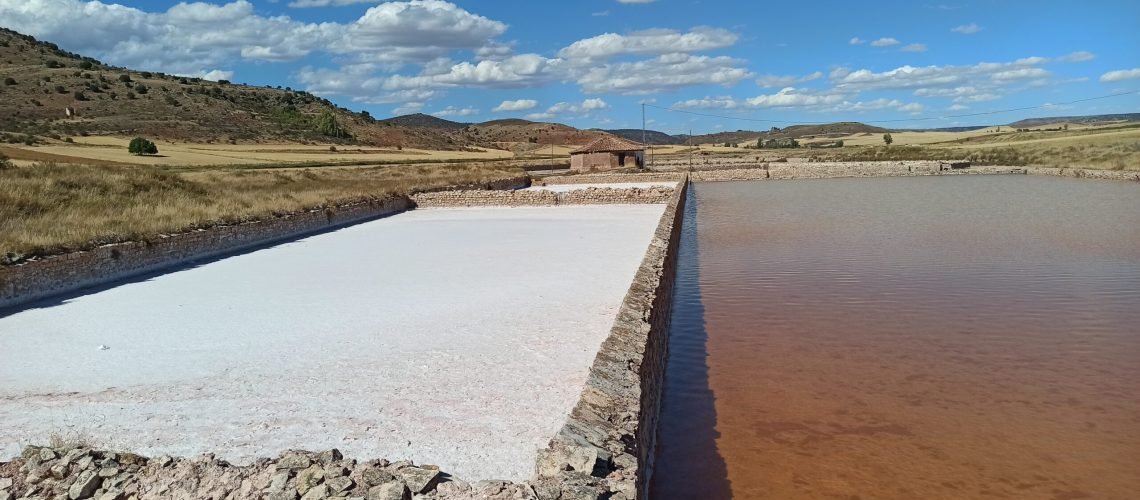
Between the silence of the valley of Sigüenza and the breeze of the Salado River, the Salinas de Imón are located, a historic pre-industrial heritage of 12 hectares of extension that stands out for its complex structure and its ancient functionality.
Walking through these cobblestone streets can transport us to more ancient times, and marvel at the incredible human capacity to build and progress. It can also make us reflect on the value we give to the buildings that once had so much significance and that today are presented as another example of humanity’s past.
For a long time, the salt mines of Imón wrote the history of the town, being one of the largest producers in Spain. Between the tenth and thirteenth centuries, this place was of great importance, since salt was a positive factor for development at that time, as it was used to preserve foodstuffs, especially fish and pigs. The plant generated up to 3600 tons of sodium chloride per year.
Today, the salt pans still operate, but at a much lower intensity. Its strong operation is from May to October, since these are the months of greater evaporation. The visit is free. Casa Chocolat can be reached in just 6 minutes on foot.
Buildings and uses
The Salinas de Imón are currently made up of various types of buildings built with limestone and mortar, located on both sides of the road leading from Sigüenza to Atienza.
The buildings that can be seen now date from different periods, although most of the architectural ensemble is from the 18th century.
The most important are the warehouses, which are of large proportions and were common to the entire salt mine. They have an entrance portico with stone or wooden columns and a cobblestone interior. There are two large warehouses: San José and San Antonio. There are also office buildings and a caretaker’s house.
Other characteristic buildings are the mills, with an octagonal floor plan, which house the waterwheels that extract water from the wells.
The waterwheels, draught or blood waterwheels, because they are moved by animals, have a double wooden structure: driving wheel, located horizontally, and lifting wheel, located vertically.
The installations are completed with a system of separations and communications. The different water tanks are paved and separated from each other by walls. The water passes from the wells to the watering troughs, heaters and ponds through a system of irrigation ditches, gutters or wooden pipes.
In turn, communicating the installation with the warehouses, there are cobblestone roads of varying widths depending on their mode of use, on foot, by horses or vehicles, including wagons that transported the salt.

How to get to the Salinas de Imón?
Las Salinas de Imón are only 500 meters away from Casa Chocolat. It can be reached on foot in just 6 minutes, along C. Soledad. The salt mines are located in the hamlet of Imón, belonging to the municipality of Sigüenza, in the province of Guadalajara. From Madrid, in less than 2 hours you are already in the salt mines, taking the A-2 that connects Zaragoza with Madrid, take the Sigüenza exit, continuing along the CM-110, just before reaching Imón, you will find the salt mines.
Nature and surroundings
In addition to the buildings, you can also observe a peculiar ecosystem that provides a home to unusual species in these latitudes. Halophilic plants, so called because of their appetite for salt, live here. There are also certain bacteria and a small crustacean, such as Artemia Salina, which is responsible for dyeing the saline waters with a peculiar reddish hue. In addition, the area has been declared a Site of Community Interest and a Special Protection Area for Birds.
